Edoardo Manino
The 6th International Verification of Neural Networks Competition (VNN-COMP 2025): Summary and Results
Dec 22, 2025Abstract:This report summarizes the 6th International Verification of Neural Networks Competition (VNN-COMP 2025), held as a part of the 8th International Symposium on AI Verification (SAIV), that was collocated with the 37th International Conference on Computer-Aided Verification (CAV). VNN-COMP is held annually to facilitate the fair and objective comparison of state-of-the-art neural network verification tools, encourage the standardization of tool interfaces, and bring together the neural network verification community. To this end, standardized formats for networks (ONNX) and specification (VNN-LIB) were defined, tools were evaluated on equal-cost hardware (using an automatic evaluation pipeline based on AWS instances), and tool parameters were chosen by the participants before the final test sets were made public. In the 2025 iteration, 8 teams participated on a diverse set of 16 regular and 9 extended benchmarks. This report summarizes the rules, benchmarks, participating tools, results, and lessons learned from this iteration of this competition.
GPT, But Backwards: Exactly Inverting Language Model Outputs
Jul 02, 2025Abstract:While existing auditing techniques attempt to identify potential unwanted behaviours in large language models (LLMs), we address the complementary forensic problem of reconstructing the exact input that led to an existing LLM output - enabling post-incident analysis and potentially the detection of fake output reports. We formalize exact input reconstruction as a discrete optimisation problem with a unique global minimum and introduce SODA, an efficient gradient-based algorithm that operates on a continuous relaxation of the input search space with periodic restarts and parameter decay. Through comprehensive experiments on LLMs ranging in size from 33M to 3B parameters, we demonstrate that SODA significantly outperforms existing approaches. We succeed in fully recovering 79.5% of shorter out-of-distribution inputs from next-token logits, without a single false positive, but struggle to extract private information from the outputs of longer (15+ token) input sequences. This suggests that standard deployment practices may currently provide adequate protection against malicious use of our method. Our code is available at https://doi.org/10.5281/zenodo.15539879.
Neural Network Verification is a Programming Language Challenge
Jan 10, 2025
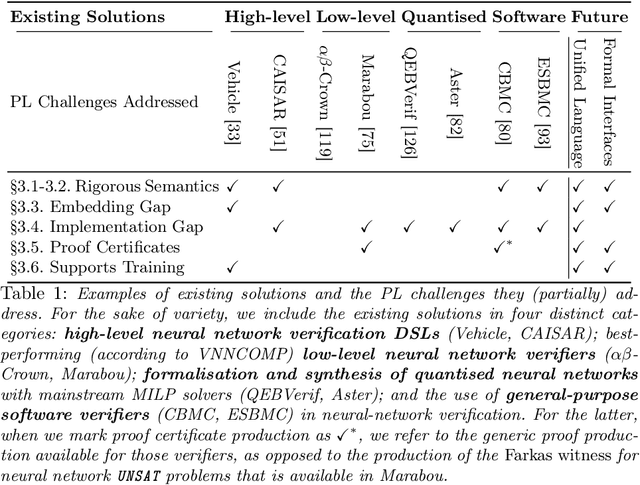

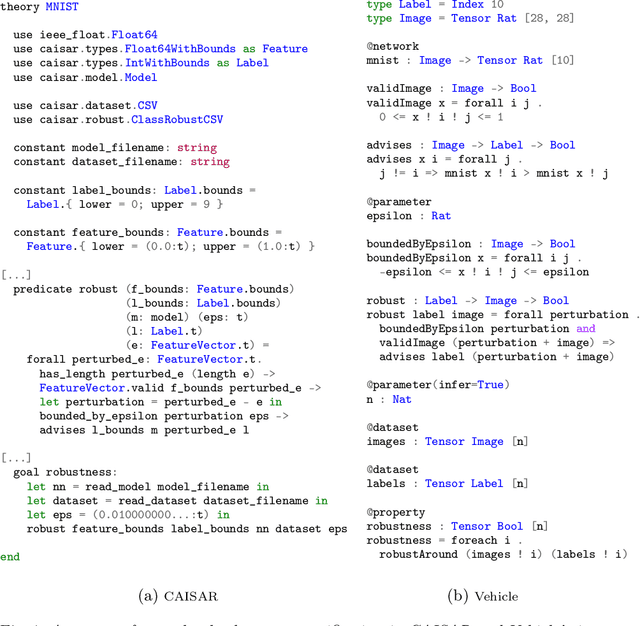
Abstract:Neural network verification is a new and rapidly developing field of research. So far, the main priority has been establishing efficient verification algorithms and tools, while proper support from the programming language perspective has been considered secondary or unimportant. Yet, there is mounting evidence that insights from the programming language community may make a difference in the future development of this domain. In this paper, we formulate neural network verification challenges as programming language challenges and suggest possible future solutions.
* Accepted at ESOP 2025, European Symposium on Programming Languages
Automated Repair of AI Code with Large Language Models and Formal Verification
May 14, 2024
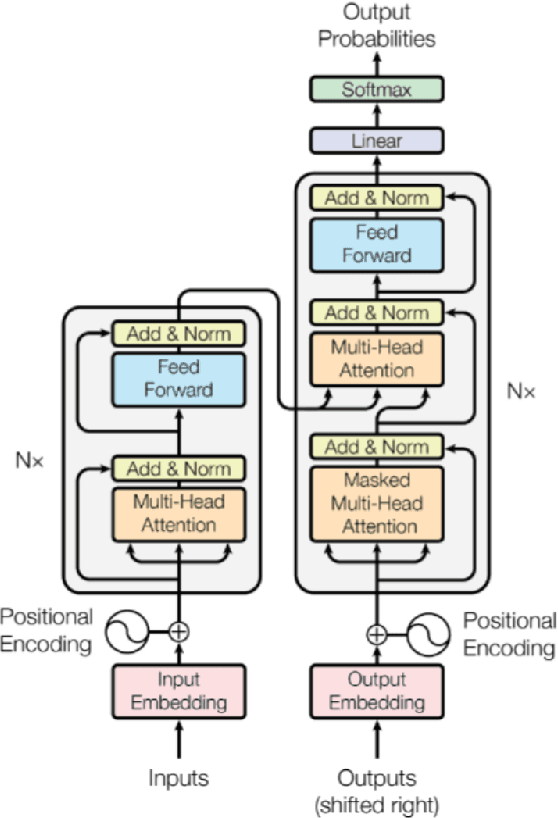


Abstract:The next generation of AI systems requires strong safety guarantees. This report looks at the software implementation of neural networks and related memory safety properties, including NULL pointer deference, out-of-bound access, double-free, and memory leaks. Our goal is to detect these vulnerabilities, and automatically repair them with the help of large language models. To this end, we first expand the size of NeuroCodeBench, an existing dataset of neural network code, to about 81k programs via an automated process of program mutation. Then, we verify the memory safety of the mutated neural network implementations with ESBMC, a state-of-the-art software verifier. Whenever ESBMC spots a vulnerability, we invoke a large language model to repair the source code. For the latest task, we compare the performance of various state-of-the-art prompt engineering techniques, and an iterative approach that repeatedly calls the large language model.
NeuroCodeBench: a plain C neural network benchmark for software verification
Sep 07, 2023


Abstract:Safety-critical systems with neural network components require strong guarantees. While existing neural network verification techniques have shown great progress towards this goal, they cannot prove the absence of software faults in the network implementation. This paper presents NeuroCodeBench - a verification benchmark for neural network code written in plain C. It contains 32 neural networks with 607 safety properties divided into 6 categories: maths library, activation functions, error-correcting networks, transfer function approximation, probability density estimation and reinforcement learning. Our preliminary evaluation shows that state-of-the-art software verifiers struggle to provide correct verdicts, due to their incomplete support of the standard C mathematical library and the complexity of larger neural networks.
LF-checker: Machine Learning Acceleration of Bounded Model Checking for Concurrency Verification (Competition Contribution)
Jan 22, 2023Abstract:We describe and evaluate LF-checker, a metaverifier tool based on machine learning. It extracts multiple features of the program under test and predicts the optimal configuration (flags) of a bounded model checker with a decision tree. Our current work is specialised in concurrency verification and employs ESBMC as a back-end verification engine. In the paper, we demonstrate that LF-checker achieves better results than the default configuration of the underlying verification engine.
CEG4N: Counter-Example Guided Neural Network Quantization Refinement
Jul 09, 2022



Abstract:Neural networks are essential components of learning-based software systems. However, their high compute, memory, and power requirements make using them in low resources domains challenging. For this reason, neural networks are often quantized before deployment. Existing quantization techniques tend to degrade the network accuracy. We propose Counter-Example Guided Neural Network Quantization Refinement (CEG4N). This technique combines search-based quantization and equivalence verification: the former minimizes the computational requirements, while the latter guarantees that the network's output does not change after quantization. We evaluate CEG4N~on a diverse set of benchmarks, including large and small networks. Our technique successfully quantizes the networks in our evaluation while producing models with up to 72% better accuracy than state-of-the-art techniques.
Systematicity, Compositionality and Transitivity of Deep NLP Models: a Metamorphic Testing Perspective
Apr 26, 2022
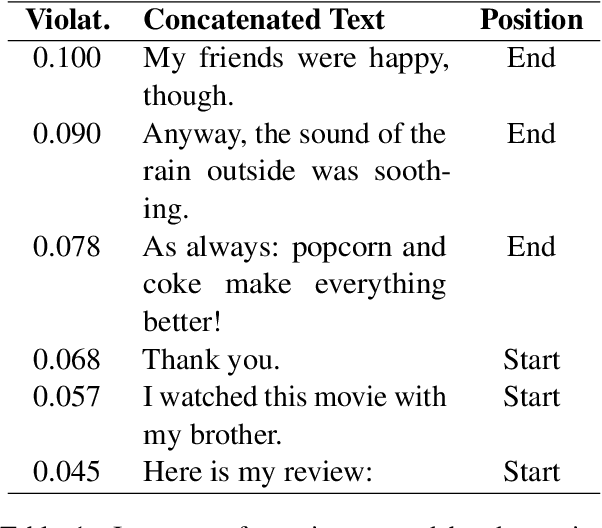


Abstract:Metamorphic testing has recently been used to check the safety of neural NLP models. Its main advantage is that it does not rely on a ground truth to generate test cases. However, existing studies are mostly concerned with robustness-like metamorphic relations, limiting the scope of linguistic properties they can test. We propose three new classes of metamorphic relations, which address the properties of systematicity, compositionality and transitivity. Unlike robustness, our relations are defined over multiple source inputs, thus increasing the number of test cases that we can produce by a polynomial factor. With them, we test the internal consistency of state-of-the-art NLP models, and show that they do not always behave according to their expected linguistic properties. Lastly, we introduce a novel graphical notation that efficiently summarises the inner structure of metamorphic relations.
QNNVerifier: A Tool for Verifying Neural Networks using SMT-Based Model Checking
Nov 25, 2021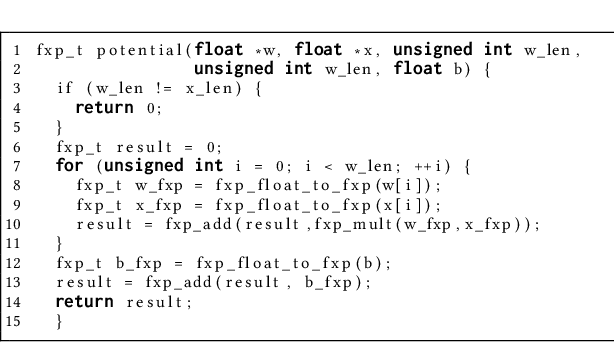

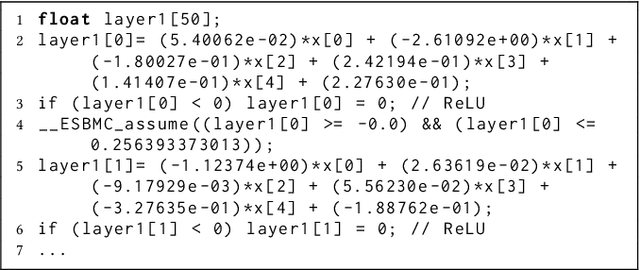

Abstract:QNNVerifier is the first open-source tool for verifying implementations of neural networks that takes into account the finite word-length (i.e. quantization) of their operands. The novel support for quantization is achieved by employing state-of-the-art software model checking (SMC) techniques. It translates the implementation of neural networks to a decidable fragment of first-order logic based on satisfiability modulo theories (SMT). The effects of fixed- and floating-point operations are represented through direct implementations given a hardware-determined precision. Furthermore, QNNVerifier allows to specify bespoke safety properties and verify the resulting model with different verification strategies (incremental and k-induction) and SMT solvers. Finally, QNNVerifier is the first tool that combines invariant inference via interval analysis and discretization of non-linear activation functions to speed up the verification of neural networks by orders of magnitude. A video presentation of QNNVerifier is available at https://youtu.be/7jMgOL41zTY
Verifying Quantized Neural Networks using SMT-Based Model Checking
Jun 10, 2021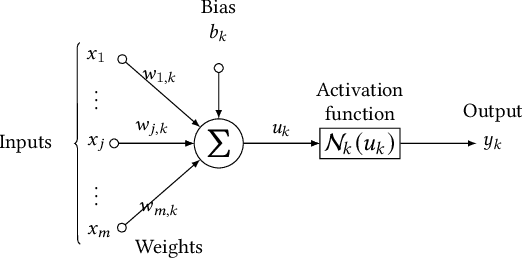


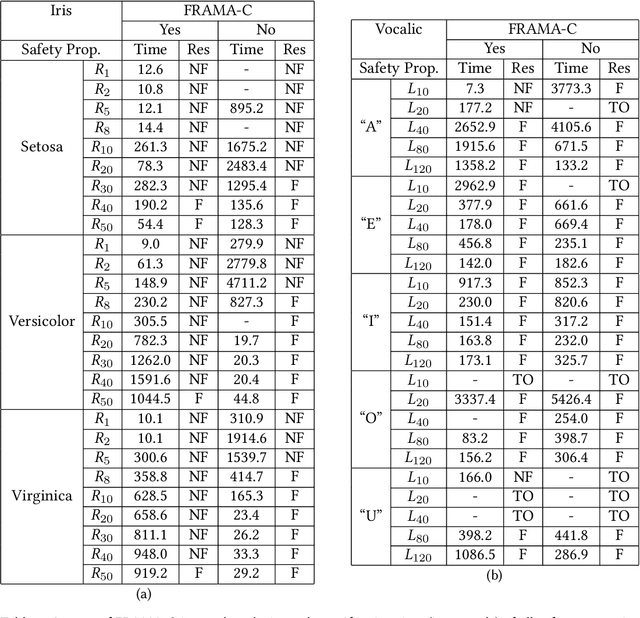
Abstract:Artificial Neural Networks (ANNs) are being deployed on an increasing number of safety-critical applications, including autonomous cars and medical diagnosis. However, concerns about their reliability have been raised due to their black-box nature and apparent fragility to adversarial attacks. Here, we develop and evaluate a symbolic verification framework using incremental model checking (IMC) and satisfiability modulo theories (SMT) to check for vulnerabilities in ANNs. More specifically, we propose several ANN-related optimizations for IMC, including invariant inference via interval analysis and the discretization of non-linear activation functions. With this, we can provide guarantees on the safe behavior of ANNs implemented both in floating-point and fixed-point (quantized) arithmetic. In this regard, our verification approach was able to verify and produce adversarial examples for 52 test cases spanning image classification and general machine learning applications. For small- to medium-sized ANN, our approach completes most of its verification runs in minutes. Moreover, in contrast to most state-of-the-art methods, our approach is not restricted to specific choices of activation functions or non-quantized representations.
 Add to Chrome
Add to Chrome Add to Firefox
Add to Firefox Add to Edge
Add to Edge